Sterilizing Exam Rooms with DIY UVC Light: Part 1
[For part 2 of this blog which details testing and validation, see https://regenexx.com/blog/blasting-the-coronavirus-with-uvc-part-2 ]
Necessity is the mother of invention. All physicians and hospitals are faced with challenges during this pandemic and one of those is making sure that the exam rooms we use are sterilized between patients. Hence this morning I’d like to go over yet another project we initiated at our Colorado HQ to keep patients safe. This one uses UVC light to provide an additional layer of exam room sterilization.
Keeping Patients Safe
We already do so many things to keep our medical office safe for patients. Here’s a shortlist:
- Individual HEPA filters with UVC light in every room. That means that the air is filtered and then passed through UVC for all of the reasons below.
- Medical grade disinfectants on all of the room surfaces between patients.
- Surgical or higher level masks for both doctor and patient.
- 70% IPA spray on our exam gloves every time we touch the patient or transition to another activity like showing the patient his or her MRI on the computer screen.
- A surveillance program for our employees that includes weekly COVID-19 testing and daily temp checks.
Why do we need any more? Because these are unprecedented times. If I can add another layer of protection that’s a net positive for both my patients and my staff.
What is UVC?
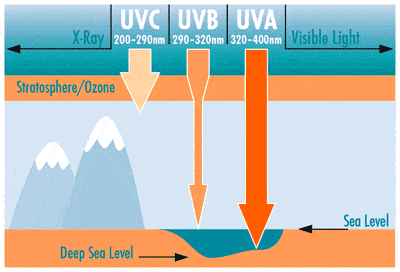
All light and electromagnetic radiation is classified by its wavelength. That’s a really small distance, so it’s measured in nanometers (nm). Ultraviolet (UV) has a wavelength from 200 nm to 400 nm, which is shorter than that of visible light but longer than X-rays. This is the “blacklight” we used to use as kids to show off crazy psychedelic posters.
The UV light spectrum is broken into:
- UVA-320-400 nm
- UVB-290-320 nm
- UVC-200-290 nm
UVA light is closest to visible light and reaches the earth in spades, as does UVB. However, thankfully UVC light doesn’t reach the ground in significant quantities. Why? It does really nasty stuff to biologic organisms.
UVC has the shortest wavelength, just north of x-rays, so it’s very energetic. Because of that energy, it can destroy both viral envelopes and genetic material in viruses and bacteria. This is not new technology as we’ve known for decades that it can easily destroy bacteria and viruses (1-4). Hence, hospitals have used UVC sterilizers in high-risk areas like ICUs for may years to kill the bad bugs like MRSA. What’s been less common is the use of UVC light in other areas of the facility.
UVC and the Coronavirus
The SARS-CoV-2 virus is an enveloped RNA virus and we have known for some time that UVC light can damage both of the envelope and genetic material of this type of virus (5). In fact, the coronavirus is in a category of single standard RNA viruses that are the most susceptible to low levels of UVC. Researchers have also used UVC light to directly kill the coronavirus (6).
Sunlight and the Coronavirus
The National Biodefense Analysis and Countermeasures Center (NBACC) in Maryland has performed some very sophisticated tests on the durability of the SARS-CoV-2 virus. They have a unique testing system where they can suspend a single water droplet containing the virus and alter the humidity, temperature, and simulated sunlight and look at how the virus holds up. Here’s a slide from the NBACC White House Presentation on April 23rd:
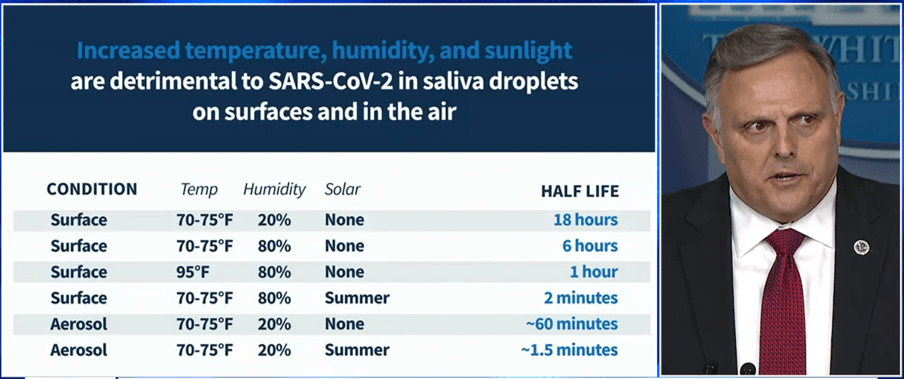
As you can see, the coronavirus didn’t last long in the direct summer sun, which contains copious amounts of UVA and UVB, both of which are less lethal to viruses than UVC.
Medical Sterilizers are Crazy Expensive
Medical UVC sterilizers are nothing more than UVC bulbs attached to a rolling stand with a remote control or timer. However, they cost between 3-5 K for one big enough to sterilize an exam or procedure room. The other problem is that getting ahold of one in short order is tough right now. Usually, it’s getting in line for a unit to be delivered 2-3 months from now. Hence, can you make your own for far less and get up and running much more quickly? Can it all be done by purchasing things that are a week or less out on Amazon delivery?
The DIY UVC Room Sterilizer
Here’s what you’ll need:
- A remote control wall plug
- A lamp with 5 moveable arms
- UVC bulbs
Remote Control Wall Plug
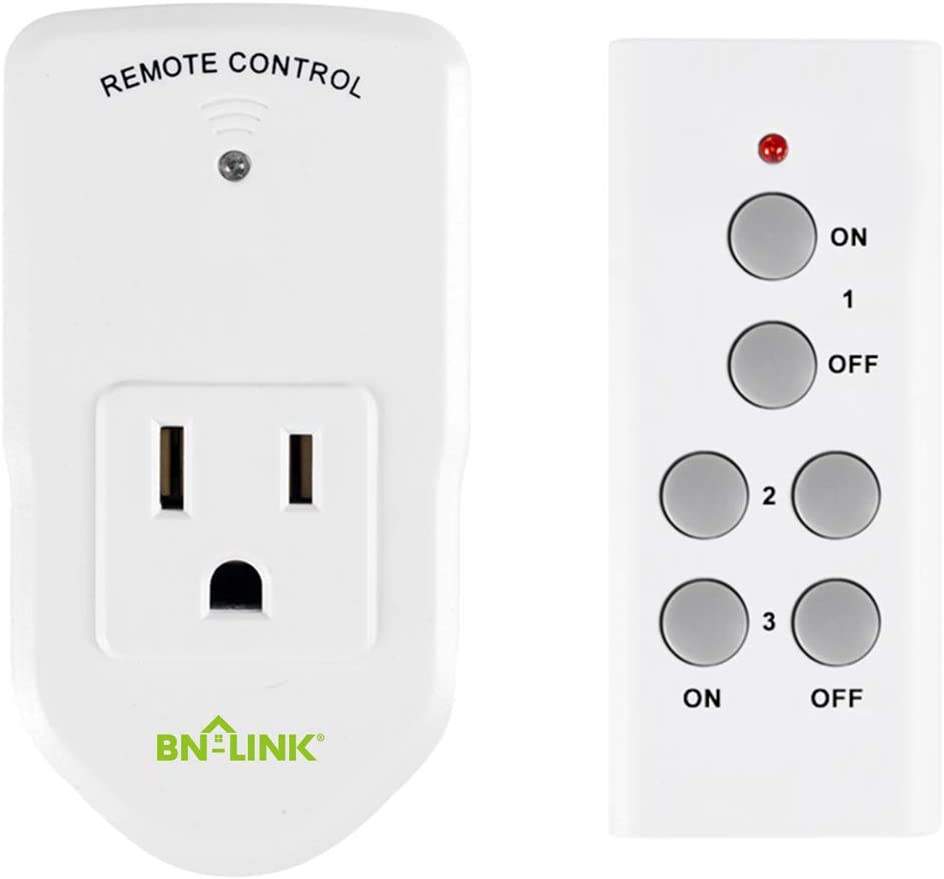
A Lamp with 5 Moveable Arms
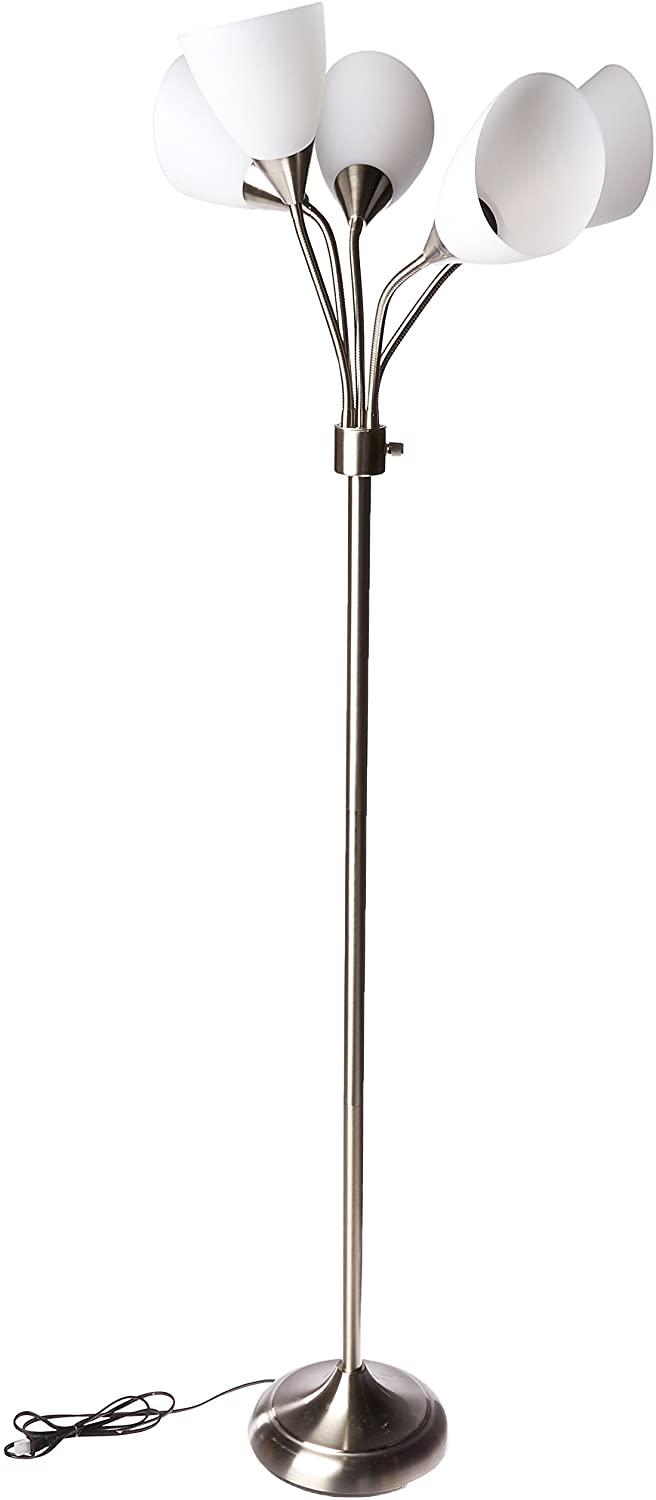
This is the first one I bought on Amazon which I call “Medusa 1”. If you remember, this Greek god had snakes for hair and you couldn’t look at her directly or else you would turn to stone, hence, the name seemed apt. On this model, I’ll remove the shades to get maximum UVC light in the room.
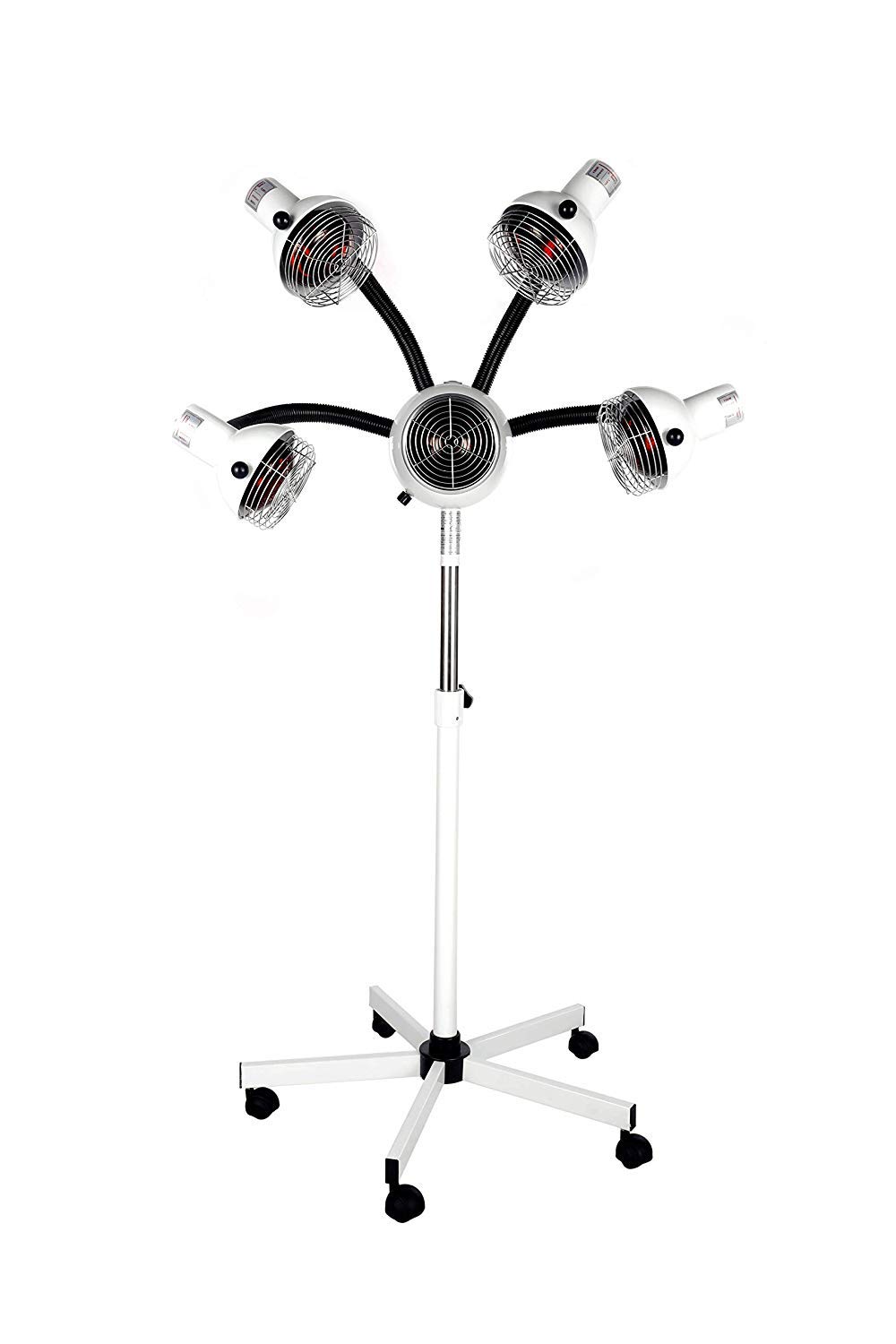
The problem with Medussa 1, is that it’s designed to accept five 25 watt mercury UVC lamps as discussed below, so that’s only 125 watts. Hence, I also bought “Medusa 2” also on Amazon which is a hair salon lamp with much higher wattage per lamp to accept higher wattage UVC bulbs. Medusa 2 should be able to achieve 500 watts. It also has highly adjustable arms and height, for all of the same reasons as Medusa 1. Again I need maximum flexibility to get light into every nook and cranny of the room.
UVC Bulbs
The UVC bulbs on Amazon come in two distinct types:
- Quartz Ozone Bulbs-These bulbs are also called “Mercury Lamps”. They emit light at 254 nm as well as 185 nm (which produces ozone). The ones that screw into standard bulb sockets typically max out at 25 watts. This is the brand I bought on Amazon.
- “Corn Cob” LED Ozone Free Bulbs-These are specially designed LED lights that are studded around a cylinder and look like a corn cob. These typically emit at around 250-270 nm and can be found in much higher wattages like 60, 90, and 100. This is the 100-watt version I purchased from Amazon.
I bought 5 of each with the Quartz bulbs going into Medusa 1 and the LED bulbs going into Medusa 2. On the LED UVC lamps, there is published literature that LED produced UVC can deactivate pathogens just like the more traditional quartz bulbs (7).
How Much Sterilizing Time?
Based on the NBACC data and other information, 2 minutes of UVC light (without anyone in the room) should be more than enough. Hence, we will begin sterilizing rooms with Medusa 1 this week. This is in addition to all of the other things we do as listed above. Once we get Medusa 1 up and running, I’ll do a short video as part 2 of this series.
Inexpensive Exam Room Validation
How can you validate that your DIY sterilizer is putting out enough UVC to kill common medical pathogens without an onsite research lab like the one we have in Colorado? It can get complex, in fact, looking at the physics gave me a massive headache. However, is an easier way to figure this out without a Ph.D. in photobiology?
It’s all about the energy per unit time that hits any surface in the room. That’s measured as joules (actually millijoules) per square centimeter. However, you really don’t need to know any of that, instead just purchase some UVC dosimeters. Believe it or not, I found a company online that sells UVC dosimeters that look like playing cards. They have a photosensitive chemical on them that responds to UVC light beyond specific exposures. The healthcare version turns a certain color if the exposure exceeds what it takes to fry common healthcare pathogens. I ordered a set of 50 cards for about $200 with shipping.
I plan to place them at various spots around the exam room with different configurations and times using Medusa 1 and 2. For example, because both versions of this DIY UVC lamp have the ability to shine a light on different high use areas of the room, does that work better than just blasting the whole room? How long does it take to get these levels?
Lab Testing Medusa 1 vs Medusa 2
Here is Medussa 1 at work:
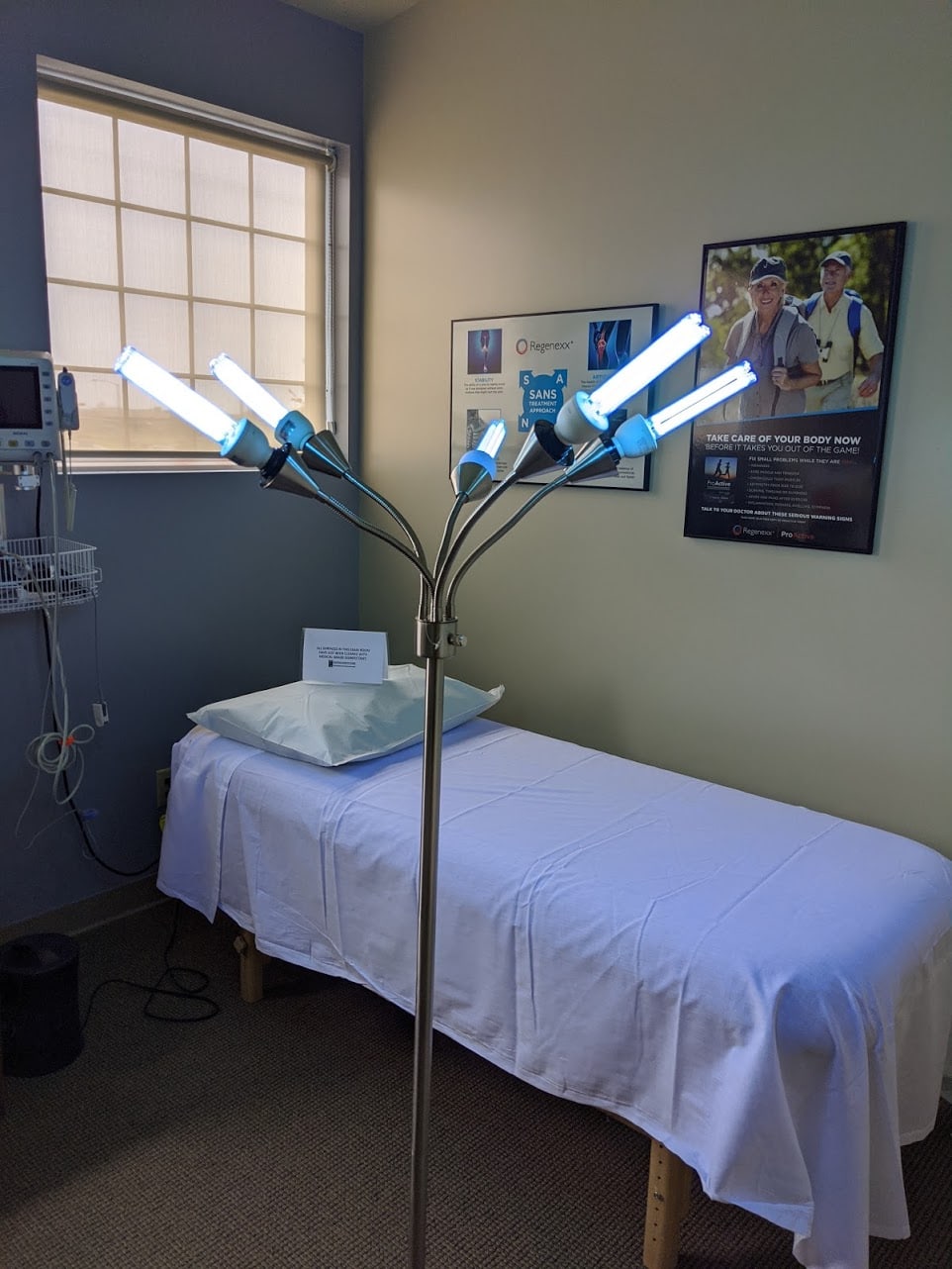
The week after next, once all of the parts for Medussa 2 arrive, I plan to do a part 3 blog and report the results of our bacterial decontamination data. In this experiment, we will use the same RODAC plates we use in our contamination surveillance program for Regenexx labs in our exam rooms. The experimental conditions will be the bacterial load on surfaces after:
- Medical grade disinfectant
- Medical grade disinfectant plus various times with Medussa 1
- Medical grade disinfectant plus various times with Medussa 2
While not a perfect coronavirus experiment, without having a BSL 4 lab to play with lethal viruses, this bacterial load experiment should serve as a proxy for the virus.
The upshot? The goal here is to design an inexpensive way for physicians in small clinics to add an additional sterilization step to their exam rooms. Can we create an efficient UVC sterilizer for under $500 that provides similar results to ones costing 10 times that much? Can we do it with off the shelf parts from Amazon that can be assembled in days rather than waiting months to get in line for the higher cost units? Stay tuned!
______________________________________
References:
(1) Kowalski, W. J. Ultraviolet Germicidal Irradiation Handbook: UVGI for Air and Surface Disinfection, (New York: Springer).
(2) Wells, W. F. & Fair, G. M. Viability of B. Coli Exposed to Ultra-Violet Radiation in Air. Science 82, 280–281 (1935).
(3) Conner-Kerr, T. A., Sullivan, P. K., Gaillard, J., Franklin, M. E. & Jones, R. M. The effects of ultraviolet radiation on antibiotic-resistant bacteria in vitro. Ostomy Wound Manage 44, 50–56 (1998).
(4) Budowsky, E. I., Bresler, S. E., Friedman, E. A. & Zheleznova, N. V. Principles of selective inactivation of viral genome. I. UV-induced inactivation of influenza virus. Arch Virol 68, 239–247 (1981).
(5) Tseng CC, Li CS. Inactivation of viruses on surfaces by ultraviolet germicidal irradiation. J Occup Environ Hyg. 2007;4(6):400‐405. doi:10.1080/15459620701329012
(6) University of California – Santa Barbara. “Ultraviolet LEDs prove effective in eliminating coronavirus from surfaces and, potentially, air and water.” ScienceDaily. ScienceDaily, 14 April 2020. <www.sciencedaily.com/releases/2020/04/200414173251.htm>.
(7) Kim S, et al. Using UVC Light-Emitting Diodes at Wavelengths of 266 to 279 Nanometers To Inactivate Foodborne Pathogens and Pasteurize Sliced Cheese. Applied and Environmental Microbiology Dec 2015, 82 (1) 11-17; DOI: 10.1128/AEM.02092-15

If you have questions or comments about this blog post, please email us at [email protected]
NOTE: This blog post provides general information to help the reader better understand regenerative medicine, musculoskeletal health, and related subjects. All content provided in this blog, website, or any linked materials, including text, graphics, images, patient profiles, outcomes, and information, are not intended and should not be considered or used as a substitute for medical advice, diagnosis, or treatment. Please always consult with a professional and certified healthcare provider to discuss if a treatment is right for you.